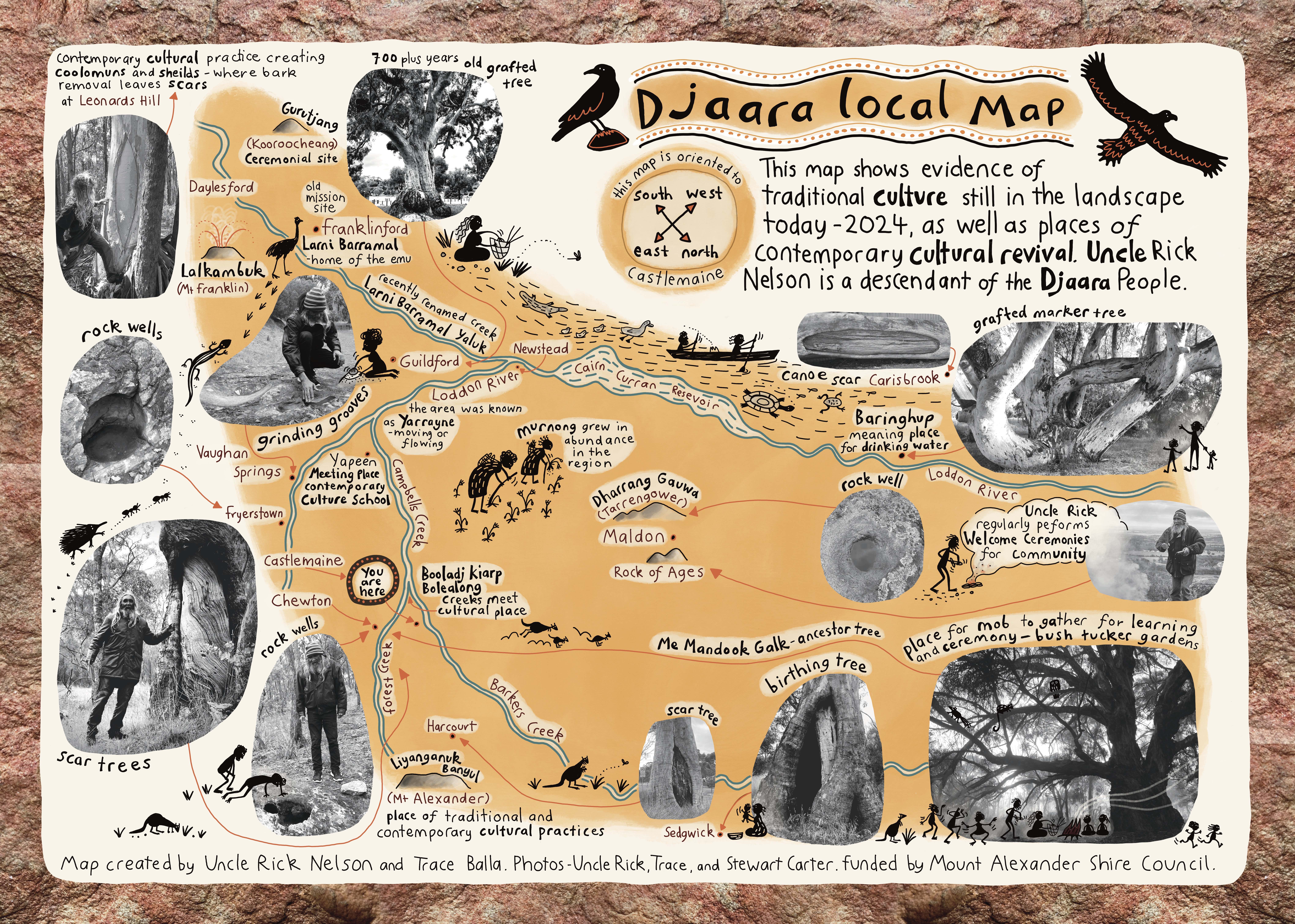Indigenous history
First Nations people have lived on and cared for the land now called Victoria for over 40,000 years, spanning more than 1,000 generations.
Mount Alexander Shire sits on the traditional lands of the Dja Dja Wurrung, also known as the Djaara, whose Country covers approximately 16,000 square kilometres.
This includes the upper reaches of Loddon and Avoca River catchments.
Dja Dja Wurrung history
Before European colonisation, the Dja Dja Wurrung Nation was made up of approximately 16 clans, or Yapenyapaks, each with custodianship over a specific part of Country.
Clan members held deep responsibilities for caring for their land, waterways, plants, animals and sacred sites.
Dja Dja Wurrung society was structured around two moieties – Bunjil (the wedge-tailed eagle) and Waang (the crow).
This system shaped social life and governed important aspects such as marriage rules, ceremony and inter-clan relationships. This helped maintain cultural balance and connection across the Djaara Nation.
The Djaara also maintained strong diplomatic and trade networks with neighbouring nations, including the Taungurung, Wurundjeri, Barapa Barapa, Wemba Wemba and Gunditjmara peoples.
Items such as greenstone axe heads from Mount William, ochre, possum-skin cloaks and tools were traded widely across the region.
Learn more about Dja Dja Wurrung history by visiting Boorp Boorp Boondyil, a permanent exhibition at the Castlemaine Market Building.
European colonisation
The arrival of Europeans in the 1830s had a devastating impact on the Dja Dja Wurrung people.
Their land was taken without treaty or compensation, forests were cleared and sacred sites were destroyed.
Violent conflict, disease and displacement led to the loss of more than 85% of their population in just a few decades.
Cultural practices, language and law were suppressed, and many Djaara people were relocated to missions and reserves – policies that later resulted in the Stolen Generations.
Dja Dja Wurrung people today
Despite this devastating history, the Dja Dja Wurrung people have continued to maintain their connection to Country, culture and community.
In 2013, the State of Victoria and the Dja Dja Wurrung Clans Aboriginal Corporation (DJAARA) entered into a Recognition and Settlement Agreement (RSA) which formally recognises the Dja Dja Wurrung people as the traditional owners for part of Central Victoria.
Dja Dja Wurrung seasonal calendar
In 2022, local Djaara Elder Uncle Rick Nelson, in collaboration with local ecologists, developed the Dja Dja Wurrung seasonal calendar.
The calendar is a valuable resource that offers insight into the Djaara’s ecological knowledge and connection to the land.
View the Dja Dja Wurrung seasonal calendar.
Djaara Cultural Mud Map
The Djaara Cultural Mud Map was created by Dja Dja Wurrung Elder Uncle Rick Nelson and designed by Trace Balla, local author and illustrator.
It was launched as part of the 2025 Sorry Day Commemoration and sits permanently at Victory Park in Castlemaine.
It’s a Djaara cultural interpretive sign, and includes pictures, information and landmarks from across the area, including Dja Dja Wurrung language names.
The map highlights both historical and contemporary culturally significant sites, and shows the shire’s footprint from a precolonial perspective.
View the enlarged the Djaara Cultural Mud Map.
